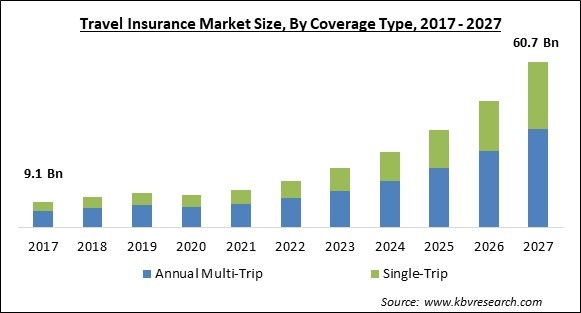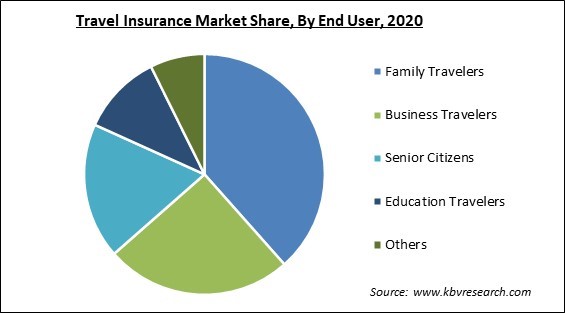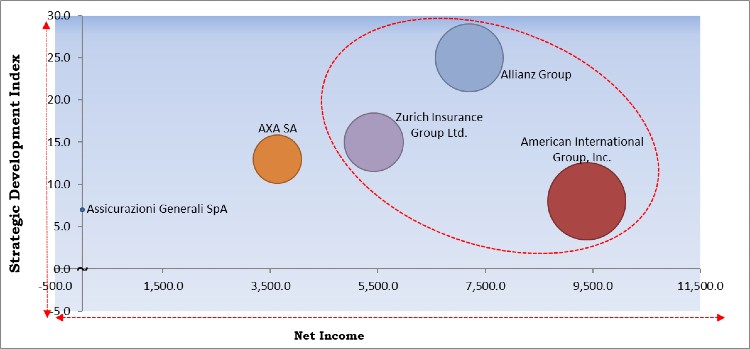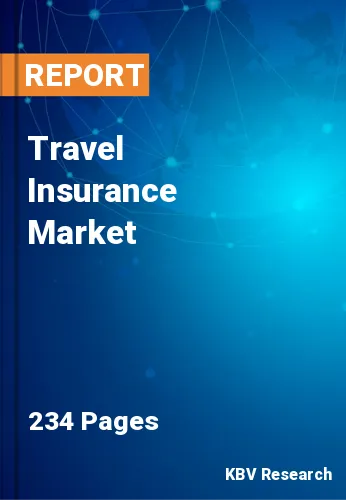The Global Travel Insurance Market size is expected to reach $60.7 billion by 2027, rising at a market growth of 28.2% CAGR during the forecast period.
Travel insurance gives financial protection for expenses or losses caused as a result of unforeseen circumstances while traveling domestically or internationally. It usually includes the cost of stolen or lost items, emergency medical treatment, unexpected death, and travel cancellation and stoppage. It kicks in on the day of travel and lasts till the insured returns home. Several firms now offer travel insurance with emergency services like cash wire help, replacing lost passports, and re-booking cancelled flights that are available 24 hours a day, seven days a week. They also provide customization options based on geographic area and the needs of covered persons.
Travel insurance is structured to give protection against potential hazards and financial losses while customer is on the road. The dangers range from simple annoyances like missed flight connections & delayed luggage to more significant problems like injuries or serious sickness. Travel insurance can protect them from medical bills incurred while traveling that are not covered by their regular health insurance. Often these health insurance policies do not give full coverage in overseas nations, and some plans, including Medicare, do not provide any coverage at all. Travel insurance can help supplement medical costs if any insurer get injured or sick before or during their holiday, in addition to their regular health insurance.
Loss or theft of luggage can result in costly charges, which can be covered by travel insurance. This is especially beneficial if an airline loses insurers’ luggage, as getting them to pay for lost items can be tough. In the United States, the Department of Transportation (DOT) mandates that airlines pay passengers for missing baggage up to certain amount. In other countries, the maximum sum is less than what is paid in in The United States. Passengers must show documentation that proves the value of the missing luggage and its contents to obtain the maximum amounts. Furthermore, several airlines companies require a claim to be made within 21 days.

The COVID-19 pandemic brought the world to a halt, with unforeseeable and unexpected implications affecting global economies, people's lives, communities, and livelihoods too, and the risk of layoffs and global recession was at an all-time high. Additionally, the travel and tourist industry has endured severe economic slowdowns as a result of harsh travel restrictions and quarantine regulations around the world. As per a report published by the World Tourism Organization (UNWTO) in January 2021, international visitors in 2020 fell dramatically from the previous year of 2019. The worldwide travel insurance market was affected by such causes.
The tourism and hotel industries, on the other hand, are expected to recoup clients quickly once travel restrictions are eased. More than half of Americans said they planned to travel soon, as per a study done by Morning Consult and commissioned by the American Hotel & Lodging Association (AHLA) in February 2021.
In the last decade, the tourist industry across the world has seen consistent development. There are many countries in the world, which are becoming travel hub and gaining more popularity among millennials. Increased package holidays, disposable income, broad media coverage of various holiday types, and easy internet travel bookings have all contributed to the tourism industry's expansion. In addition, there are many students who are shifting to other countries for further studies and programs, along with that, several universities and colleges are also offering scholarship programs, which are attracting students from the world. As the tourist industry expands, more cases of crucial documents, lost luggage, natural disasters, and medical issues are reported.
In terms of VISA policy, each country has its unique set of rules and regulations for tourists of different nationalities. But, governments are increasingly requiring travelers to purchase travel insurance to receive a VISA. Travel health insurance is required to visit nations such as France, the United States, Luxembourg, Belgium, Finland, Norway, and Poland, among others. Because of the high medical expenditures and hospitalization fees in visiting countries, this provision exists to ensure that tourists are sufficiently covered in the event of medical crises. Travel health insurance makes sure that passengers are treated medically until they return home for additional treatment.
The cost of purchasing travel insurance is one of the primary disadvantages. Because a travel insurance plan covers so many things, it can be quite costly. However, because people may never use it, many individuals consider it a waste of money and time. There are many people who find that the peace of mind outweighs the cost. Furthermore, without insurance, people may be forced to pay a large sum of money for unforeseen expenses such as medical treatment for illnesses and injuries. Most travel insurance policies only cover unexpected medical expenditures incurred during the trip and do not cover the pre-existing medical conditions. Those that do usually come with a significant price rise.

Based on Coverage Type, the market is segmented into Annual Multi-Trip, and Single-Trip. Single-Trip segment procured a significant revenue share in the travel insurance market in 2020. Single-trip travel insurance is used when someone leave their house, go on a trip, and then return home, and thus require coverage for the entire trip. Individuals can visit numerous destinations or countries while on their trip, and it will still be regarded a single trip while anyone are away from home. The trend of travel blogging and the rising craze among millennials and gen Z about travelling abroad would further surge the growth of the segment.
Based on Distribution Channel, the market is segmented into Insurance Intermediaries, Insurance Companies, Banks, Insurance Brokers, and Insurance Aggregators. The Insurance Broker segment recorded a substantial revenue share in the travel insurance market in 2020. An insurance broker operates as a go-between for people and the insurance company. They can locate the coverage that best meets customers’ demands at a fair price using both their background and their insurance expertise. Brokers can save customers’ money and time, but they might charge a fee for the services they provide.
Based on End User, the market is segmented into Family Travelers, Business Travelers, Senior Citizens, Education Travelers, and Others. The Family Travellers segment acquired the highest revenue share in the travel insurance market in 2020. This is because family travellers have several members of various age groups, which necessitates more risk mitigation and planning, resulting in higher adoption of travel insurance among family travellers.
| Report Attribute | Details |
|---|---|
| Market size value in 2020 | USD 11.8 Billion |
| Market size forecast in 2027 | USD 60.7 Billion |
| Base Year | 2020 |
| Historical Period | 2017 to 2019 |
| Forecast Period | 2021 to 2027 |
| Revenue Growth Rate | CAGR of 28.2% from 2021 to 2027 |
| Number of Pages | 234 |
| Number of Tables | 380 |
| Report coverage | Market Trends, Revenue Estimation and Forecast, Segmentation Analysis, Regional and Country Breakdown, Competitive Landscape, Companies Strategic Developments, Company Profiling |
| Segments covered | Coverage Type, Distribution Channel, End User, Region |
| Country scope | US, Canada, Mexico, Germany, UK, France, Russia, Spain, Italy, China, Japan, India, South Korea, Singapore, Malaysia, Brazil, Argentina, UAE, Saudi Arabia, South Africa, Nigeria |
| Growth Drivers |
|
| Restraints |
|
Based on Regions, the market is segmented into North America, Europe, Asia Pacific, and Latin America, Middle East & Africa. Europe emerged as the leading region in the travel insurance market with the maximum revenue share in 2020. It is due to expanding tourism trends in the European region, as well as the region's health safety and hygiene demands, which are boosting the industry's expansion. Along with that, the prevalence of various heritage sites, big universities and companies are also contributing to the growth of the regional travel insurance market.
Free Valuable Insights: Global Travel Insurance Market size to reach USD 60.7 Billion by 2027

The major strategies followed by the market participants are Partnerships. Based on the Analysis presented in the Cardinal matrix; American International Group, Inc., Allianz Group and Zurich Insurance Group Ltd. are the forerunners in the Travel Insurance Market. Companies such as AXA SA and Assicurazioni Generali SpA are some of the key innovators in the Market.
The market research report covers the analysis of key stake holders of the market. Key companies profiled in the report include Seven Corners, Inc., USI Insurance Services, LLC, Assicurazioni Generali SpA, American International Group, Inc., Allianz Group, AXA SA, and Zurich Insurance Group Ltd.
By Coverage Type
By Distribution Channel
By End User
By Geography
Our team of dedicated experts can provide you with attractive expansion opportunities for your business.

